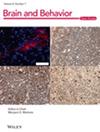Motor task performance guided by one sensory modality (e.g., visual stimuli) can be improved by training; however, whether this training can also improve performance on the same task guided by another sensory modality remains uncertain (e.g., tactile stimuli). This study examined the effects of Go/No-go task training using visual stimulus cues on Go/No-go task performance using tactile cues and whether training also influences the dominance of the sensory modality.
Go/No-go tasks and a temporal order judgment (TOJ) task were performed by 24 right-handed, healthy adults on days 1 and 5 of the 5-day experiment. Furthermore, a subpopulation (the training group) practiced the Go/No-go task with visual stimulus cues on days 2–4, whereas the remaining control group did not practice the task.
The training group demonstrated significantly reduced reaction times (RTs) on both the visual and tactile Go/No-go tasks by day 5, whereas the control group demonstrated significantly reduced RTs only on the tactile Go/No-go task. The RT change was also significantly greater in the training group than in the control group for both modalities. Conversely, no significant change in the TOJ for visual and tactile stimuli was observed between the groups.
These results indicate that motor training with visual guidance can improve performance on the same task guided by tactile stimuli, possibly due to neuroplastic changes in the multimodal association cortices.



